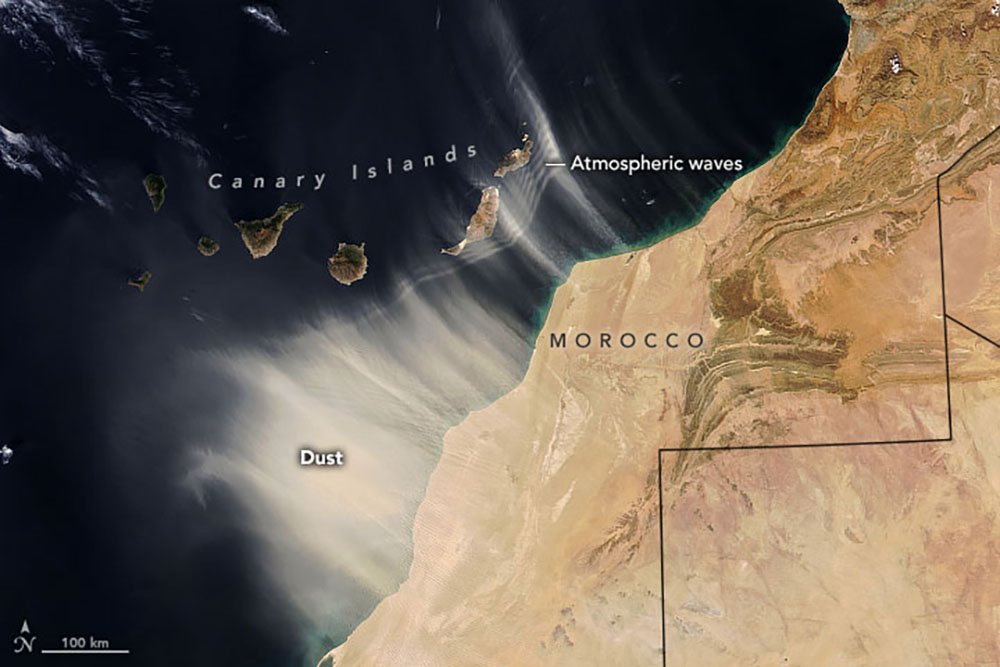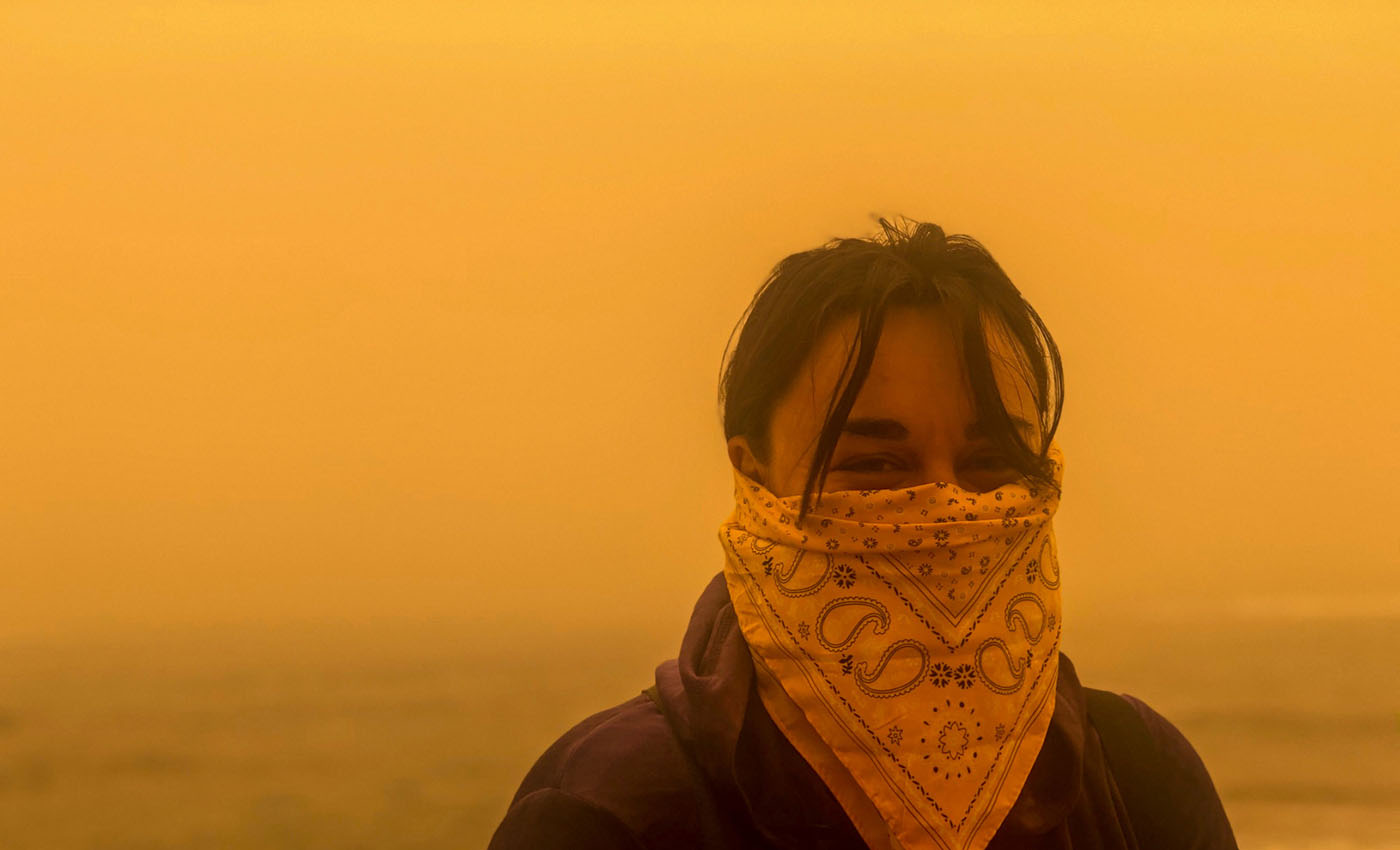The Canary Islands are known for their beautiful beaches, warm weather, and stunning views. However, there is one aspect of the islands that many people find unpleasant – the calima. The Saharan air layer descends on the islands every summer, bringing with it hot winds, dust, and decreased visibility. This phenomenon usually lasts for a few hours to a few days, but it can be quite irritating to locals and visitors alike. The temperature also tends to change significantly when a calima hits, so be prepared for some unusual weather if you’re visiting during this time!
What is a calima and what causes it?
Calima is the name given by locals in the Canary Islands to the Saharan air layer. This warm, dry fog descends on the islands periodically and can last anywhere from a few hours to a few days. The fog is caused by heated air on the islands combined with winds from the Sahara desert in Africa. This results in a layer of dust and sand that can reduce visibility and cause respiratory problems. Temperatures often rise significantly during a calima, so it’s important to be aware of the conditions before heading out.

Photo: NASA Earth Observatory image by Joshua Stevens, and Lauren Dauphin using VIIRS data from NASA EOSDIS LANCE, GIBS/Worldview, and the Joint Polar Satellite System (JPSS).
When the calima arrives, the first thing you notice is the dust. It’s everywhere – in the air, on your clothes, in your hair. And it’s not just dust – it’s sand, ashes, and clay particles in the dense cloud too. This mixture can cause a variety of symptoms, including cough, nasal obstruction, and itchy eyes. In severe cases, it can even lead to suffocation. The calima is a phenomenon that occurs in the atmosphere and is usually accompanied by dust and sand particles. As a result, they leave a cloudy environment very annoying and suffocate many times.
How does the Saharan Sand reach the Canary Islands?
The Sahara desert is located just south of the Canary Islands, so it’s not surprising that sand and dust from the Sahara can reach the islands. The wind usually picks up the sand and carries it northward until it reaches the Canary Islands. The Saharan air layer typically arrives in late summer or early fall, but it can occur at any time of year making substantial changes to the Canary Islands subtropical climate.
Every year, dust from the Sahara desert is swept across the Atlantic Ocean by trade winds. This dust plays an important role in the ocean’s ecology, providing nutrients for plants and animals and helping to regulate the ocean’s temperature. However, the amount of dust that reaches the Atlantic varies greatly from year to year, depending on the position of the Intertropical Convergence Zone (ITCZ). The ITCZ is a band of low pressure that forms around the equator, and it shifts north and south with the changing seasons. When it is located further north, more dust is blown into the Atlantic; when it is located further south, less dust is blown into the Atlantic.
What are the effects of a calima on the Canary Islands?
The main effect of a calima is reduced visibility. This can make driving difficult and cause delays at airports. The dust that is deposited around the island can also be harmful to people with respiratory problems. The temperature change caused by the hot winds from the Sahara can also be significant, so be prepared for some extreme heat or cold if you are visiting the Canary Islands during a calima.
Another effect of the calima is that it can cause problems with power lines and communication systems. The dust can interfere with electrical signals and cause disruptions in service. If you experience any problems with your phone or internet service, it is likely due to the calima.
Finally, the calima can have an impact on your mood. The reduced visibility and increased dust can make people feel irritable and anxious. If you are sensitive to these effects, it is best to stay indoors during a calima.
How long does a calima usually last?
Calimas typically last for a few hours to a few days. However, there have been instances where the calima has lingered over the Canary Islands for weeks. If you are planning to visit the islands, it is best to check the forecast in advance and be prepared for some unusual weather conditions.
What are the effects of a calima on the environment and people?
Calimas can have a significant impact on both the environment and public health. The dust can cause chest pain and difficulty breathing in people with respiratory problems, and it can also trigger asthmatic attacks. In addition, the dust can damage crops, cause airports to cancel flights, and cause power outages by clogging up power plant filters. The calima can also have a psychological impact on people, causing anxiety and irritability.
The Saharan dust storms, or Calima, usually bring very low visibility and the entire landscape seems immersed into a haze. There is dust everywhere, from cars to outdoor furniture.
How can you prepare for a calima if you’re visiting the Canary Islands
If you’re visiting the Canary Islands during a calima, there are a few things you can do to prepare.
First, make sure to drink plenty of water and stay hydrated. It’s also a good idea to limit your time outdoors, and to wear loose, light clothing if you do go outside.
If possible, try to avoid strenuous activity during a calima.
Closing your windows and doors to keep the dust out.
Some other things you can do if you’ve been outside in a calima include:
- Brushing off your clothes before going inside.
- Take a shower to remove any dust or sand that may have accumulated on your skin.
Finally, keep an eye on the local weather forecast and be prepared for sudden changes in temperature and visibility. By following these simple tips, you can make your visit to the Canary Islands during a calima as comfortable as possible.

